Abstract
Succinate is formed as an intermediate but not as a normal end product of the bovine rumen fermentation. However, numerous rumen bacteria are present, e.g., Bacteroides succinogenes, which produce succinate as a major product of carbohydrate fermentation. Selenomonas ruminantium, another rumen species, produces propionate via the succinate or randomizing pathway. These two organisms were co-cultured to determine if S. ruminantium could decarboxylate succinate produced by B. succinogenes. When energy sources used competitively by both species, i.e. glucose or cellobiose, were employed, no succinate was found in combined cultures, although a significant amount was expected from the numbers of Bacteroides present. The propionate production per S. ruminantium was significantly greater in combined than in single S. ruminantium cultures, which indicated that S. ruminantium was decarboxylating the succinate produced by B. succinogenes. S. ruminantium, which does not use cellulose, grew on cellulose when co-cultured with B. succinogenes. Succinate, but not propionate, was produced from cellulose by B. succinogenes alone. Propionate, but no succinate, accumulated when the combined cultures were grown on cellulose. These interspecies interactions are models for the rumen ecosystem interactions involved in the production of succinate by one species and its decarboxylation to propionate by a second species.
Full text
PDF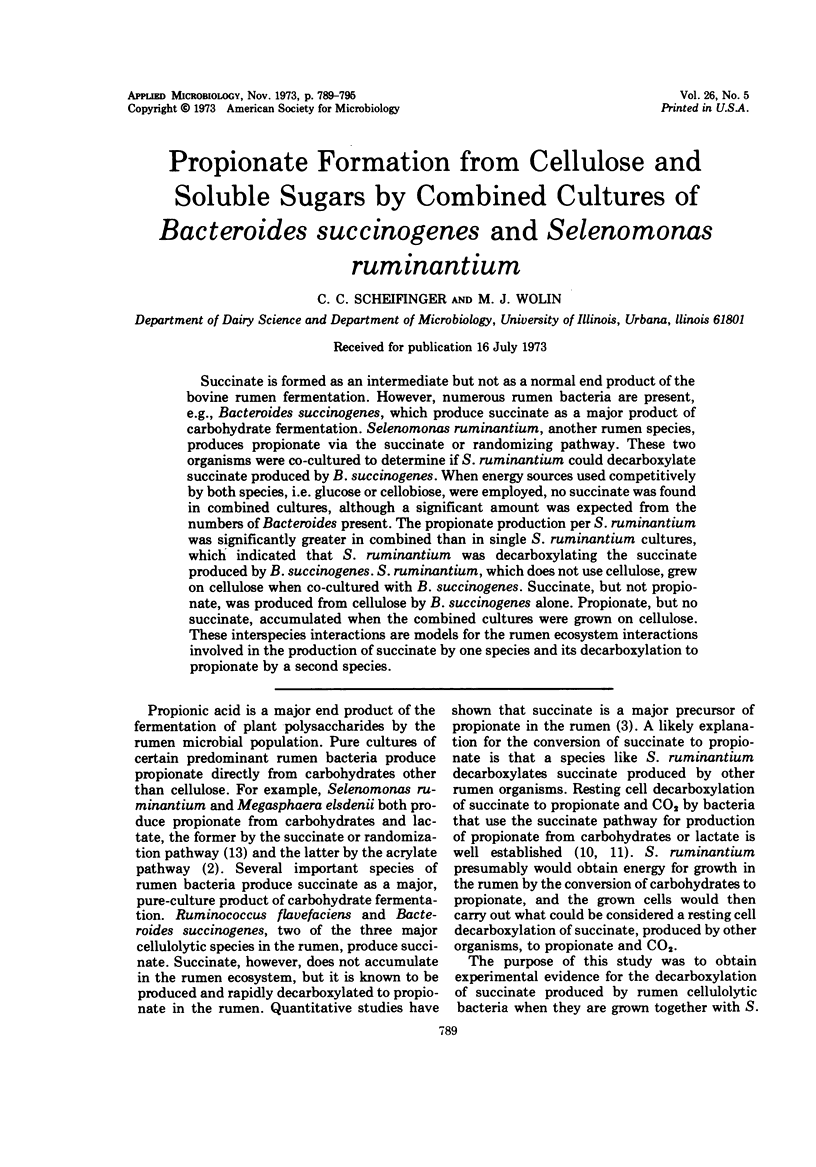
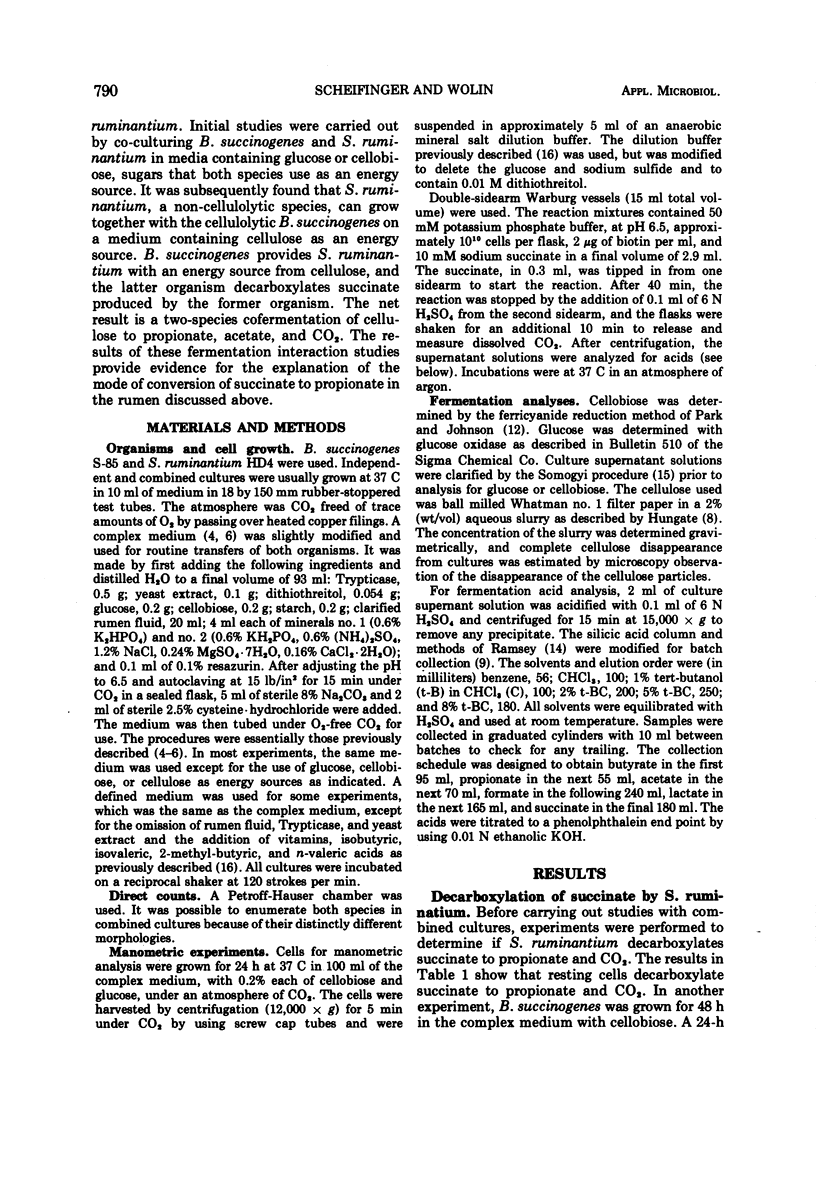
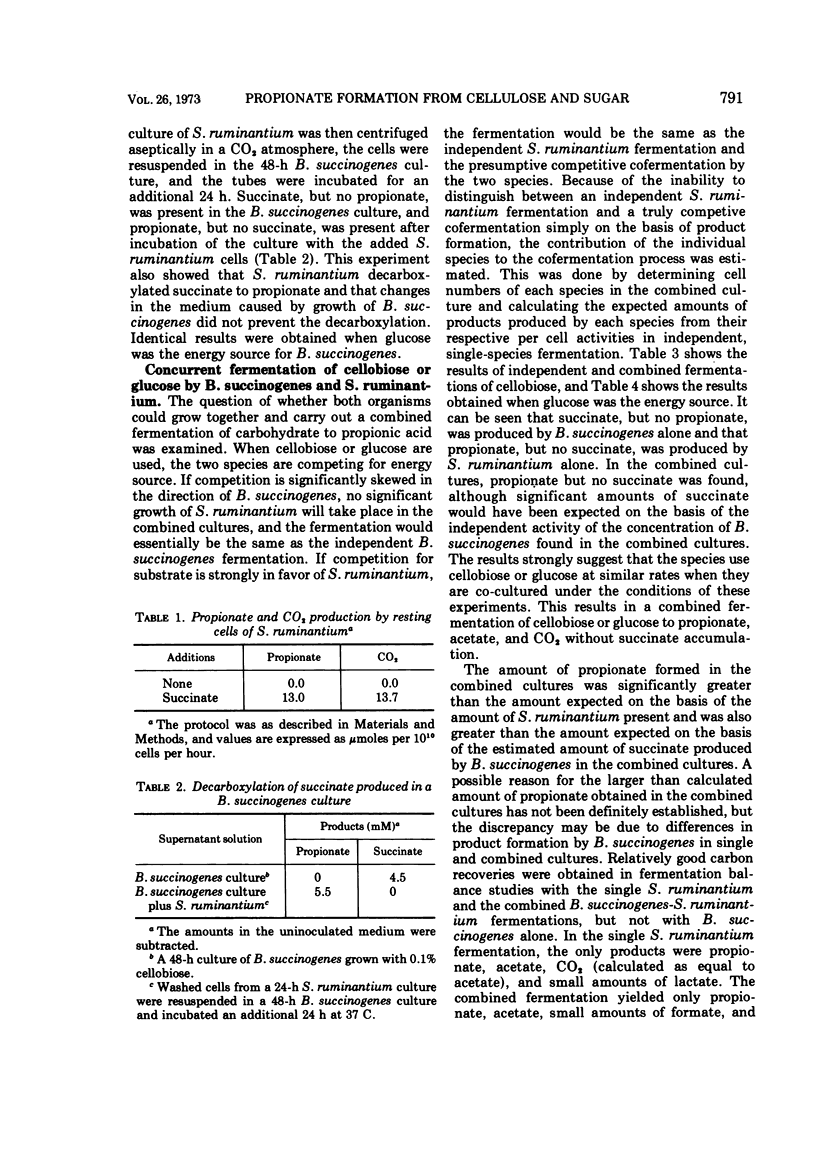
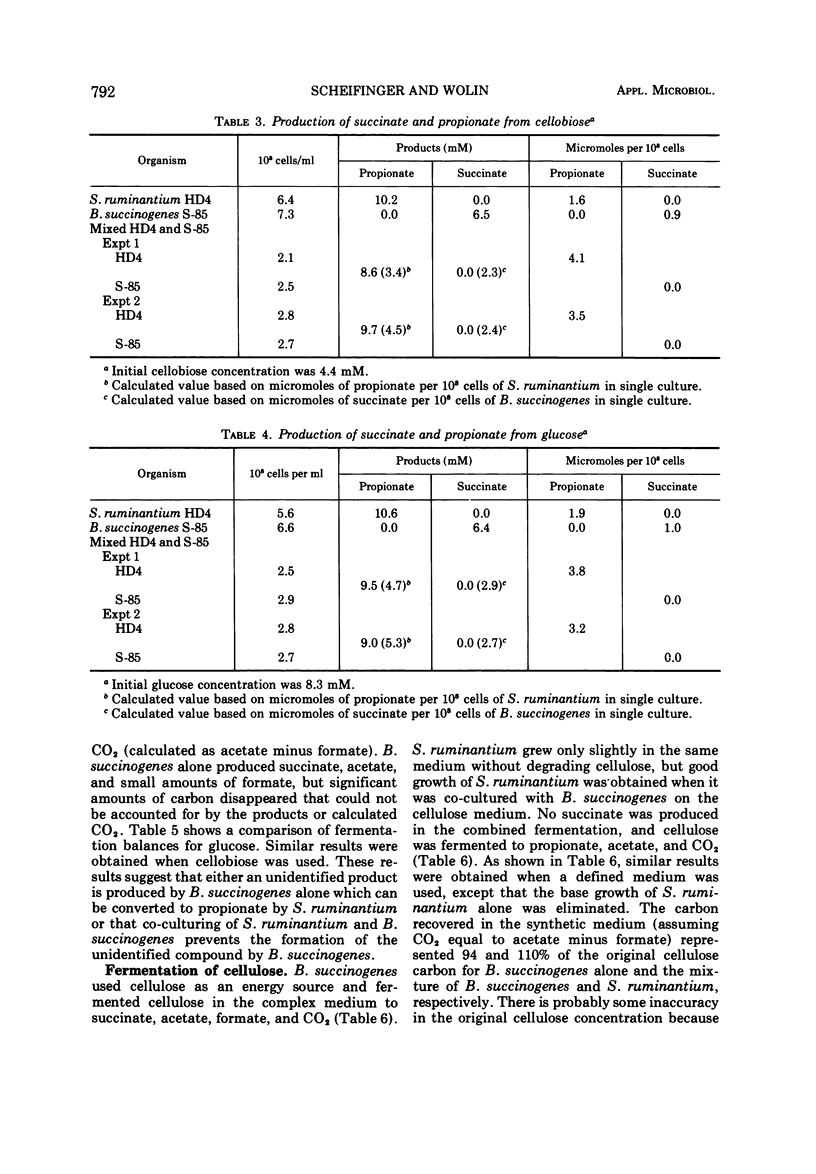
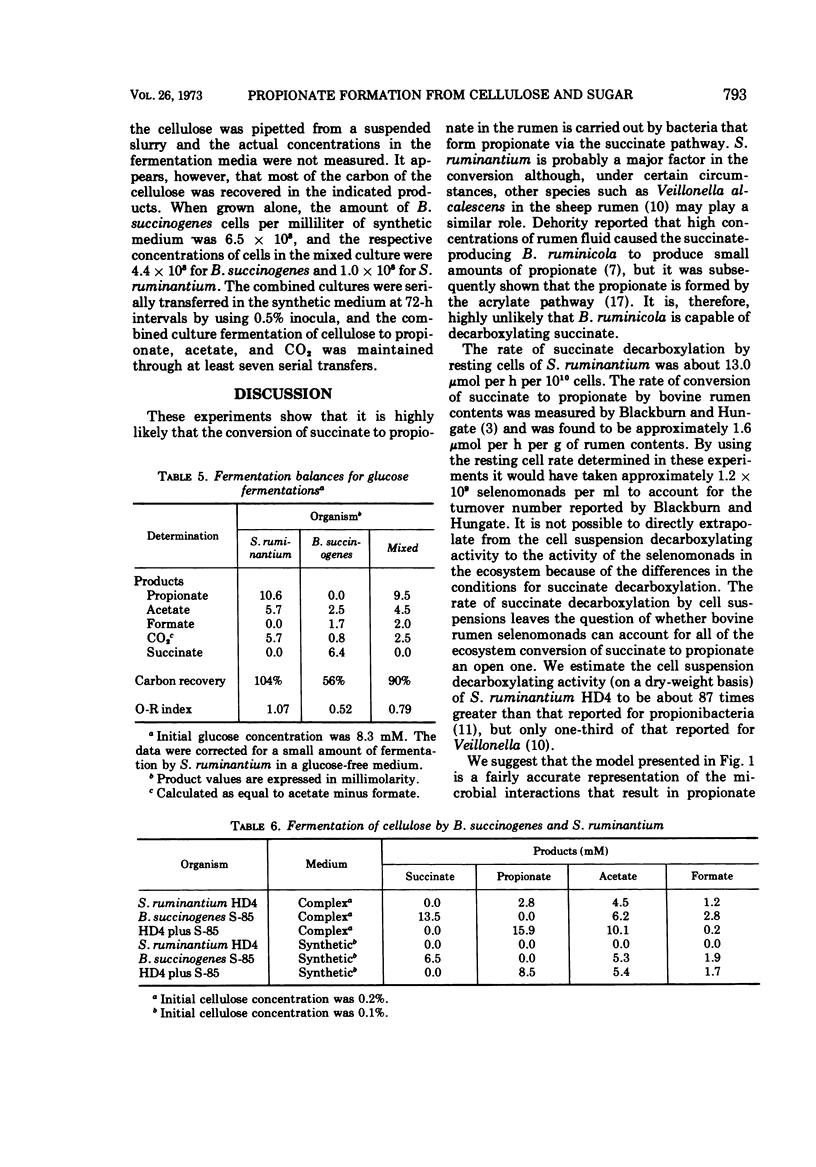
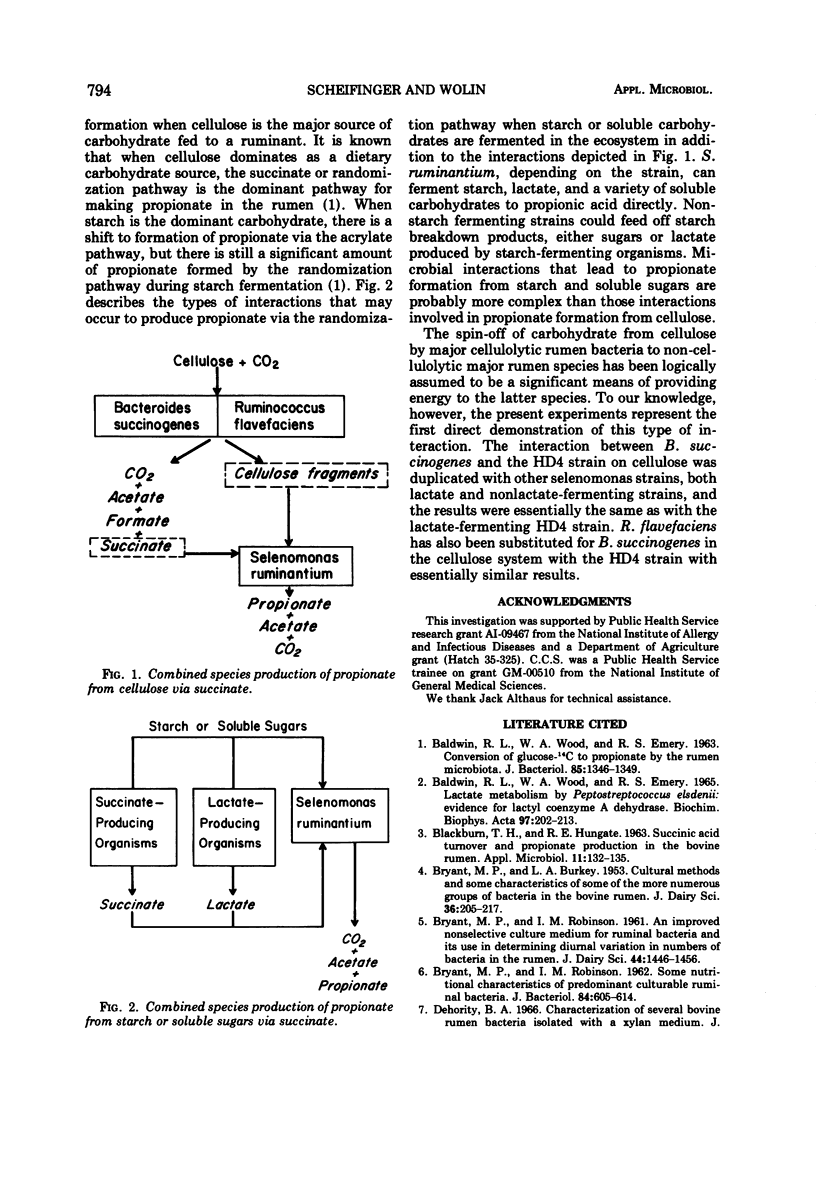
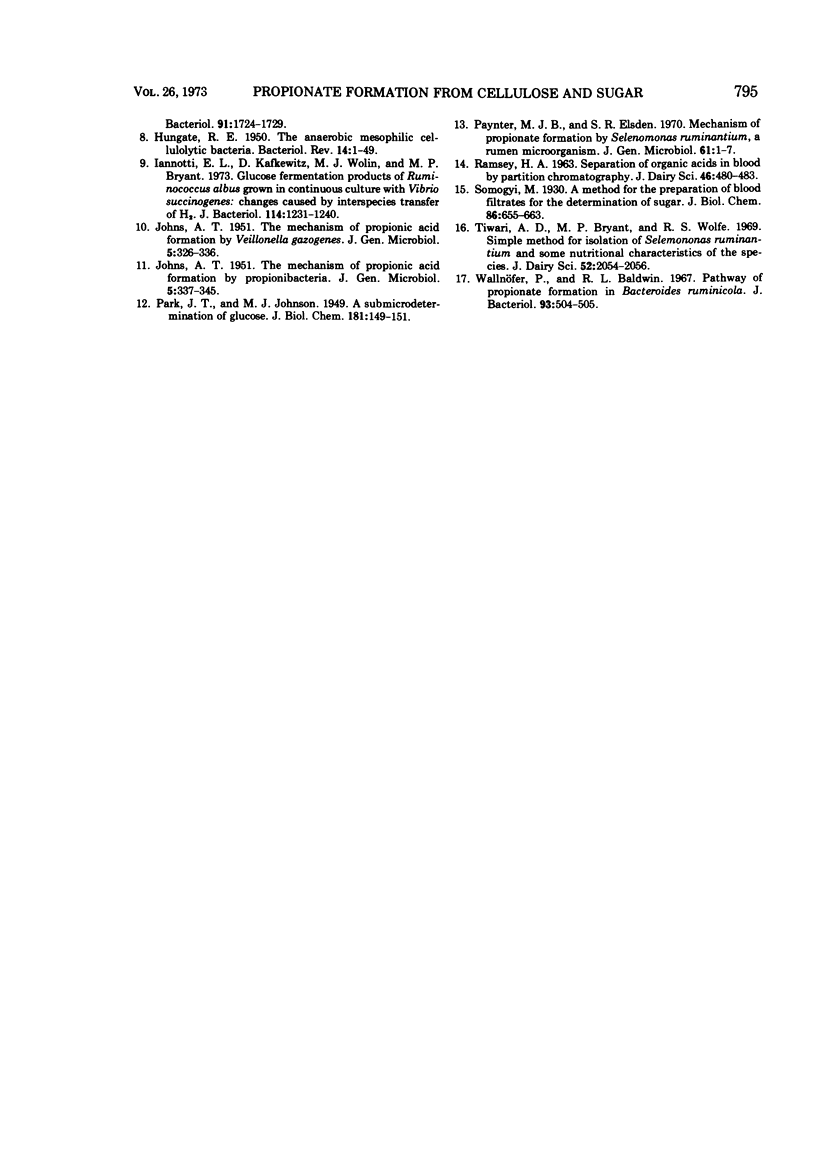
Selected References
These references are in PubMed. This may not be the complete list of references from this article.
- BALDWIN R. L., WOOD W. A., EMERY R. S. CONVERSION OF GLUCOSE-C14 TO PROPIONATE BY THE RUMEN MICROBIOTA. J Bacteriol. 1963 Jun;85:1346–1349. doi: 10.1128/jb.85.6.1346-1349.1963. [DOI] [PMC free article] [PubMed] [Google Scholar]
- BALDWIN R. L., WOOD W. A., EMERY R. S. LACTATE METABOLISM BY PEPTOSTREPTOCOCCUS ELSDENII: EVIDENCE FOR LACTYL COENZYME A DEHYDRASE. Biochim Biophys Acta. 1965 Feb 15;97:202–213. doi: 10.1016/0304-4165(65)90084-x. [DOI] [PubMed] [Google Scholar]
- BLACKBURN T. H., HUNGATE R. E. Succinic acid turnover and propionate production in the bovine rumen. Appl Microbiol. 1963 Mar;11:132–135. doi: 10.1128/am.11.2.132-135.1963. [DOI] [PMC free article] [PubMed] [Google Scholar]
- BRYANT M. P., ROBINSON I. M. Some nutritional characteristics of predominant culturable ruminal bacteria. J Bacteriol. 1962 Oct;84:605–614. doi: 10.1128/jb.84.4.605-614.1962. [DOI] [PMC free article] [PubMed] [Google Scholar]
- HUNGATE R. E. The anaerobic mesophilic cellulolytic bacteria. Bacteriol Rev. 1950 Mar;14(1):1–49. doi: 10.1128/br.14.1.1-49.1950. [DOI] [PMC free article] [PubMed] [Google Scholar]
- Iannotti E. L., Kafkewitz D., Wolin M. J., Bryant M. P. Glucose fermentation products in Ruminococcus albus grown in continuous culture with Vibrio succinogenes: changes caused by interspecies transfer of H 2 . J Bacteriol. 1973 Jun;114(3):1231–1240. doi: 10.1128/jb.114.3.1231-1240.1973. [DOI] [PMC free article] [PubMed] [Google Scholar]
- JOHNS A. T. The mechanism of propionic acid formation by Veillonella gazogenes. J Gen Microbiol. 1951 May;5(2):326–336. doi: 10.1099/00221287-5-2-326. [DOI] [PubMed] [Google Scholar]
- JOHNS A. T. The mechanism of propionic acid formation by propionibacteria. J Gen Microbiol. 1951 May;5(2):337–345. doi: 10.1099/00221287-5-2-337. [DOI] [PubMed] [Google Scholar]
- PARK J. T., JOHNSON M. J. A submicrodetermination of glucose. J Biol Chem. 1949 Nov;181(1):149–151. [PubMed] [Google Scholar]
- Paynter M. J., Elsden S. R. Mechanism of propionate formation by Selenomonas ruminantium, a rumen micro-organism. J Gen Microbiol. 1970 Apr;61(1):1–7. doi: 10.1099/00221287-61-1-1. [DOI] [PubMed] [Google Scholar]
- Wallnöfer P., Baldwin R. L. Pathway of propionate formation in Bacteroides ruminicola. J Bacteriol. 1967 Jan;93(1):504–505. doi: 10.1128/jb.93.1.504-505.1967. [DOI] [PMC free article] [PubMed] [Google Scholar]


